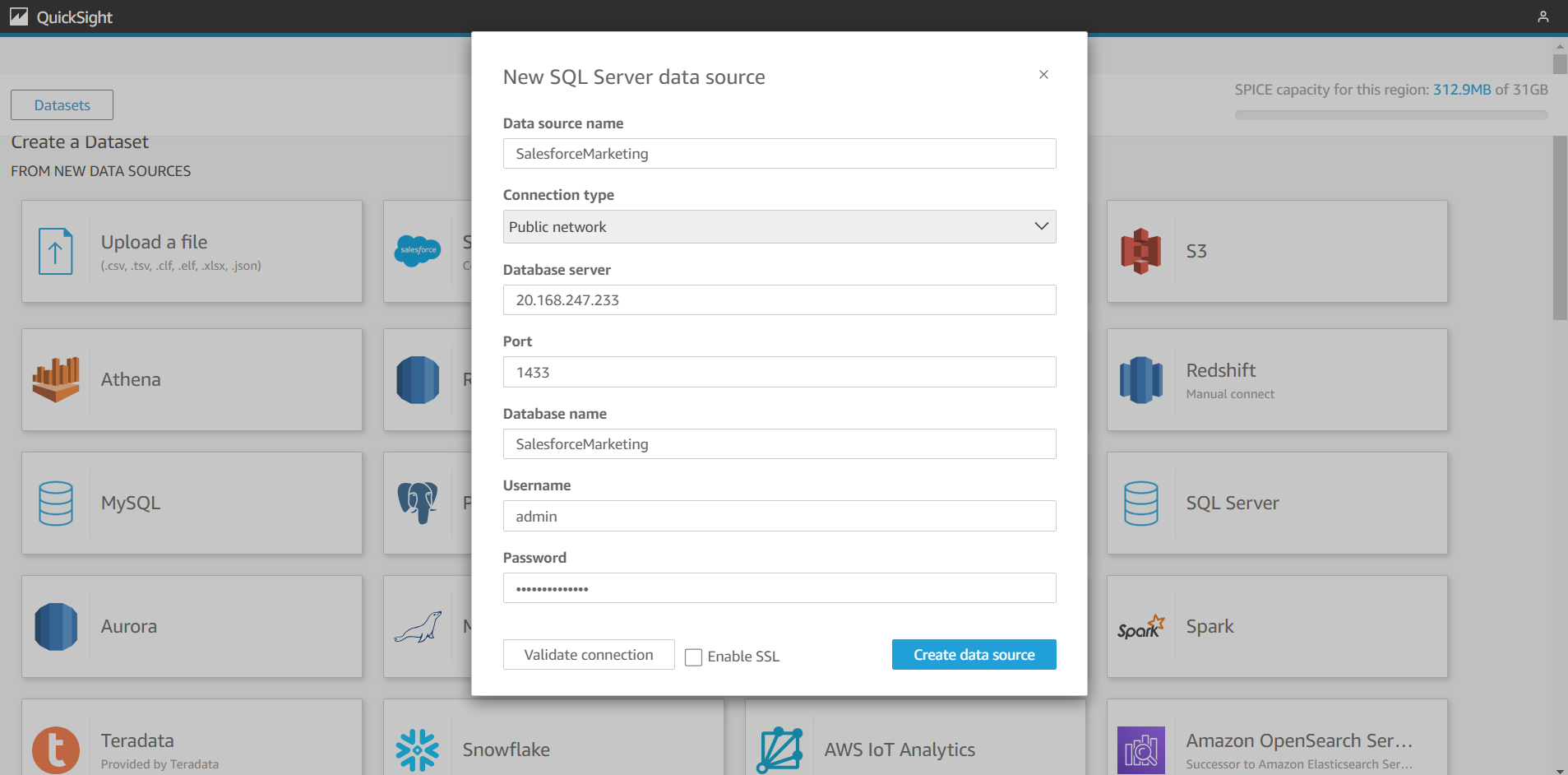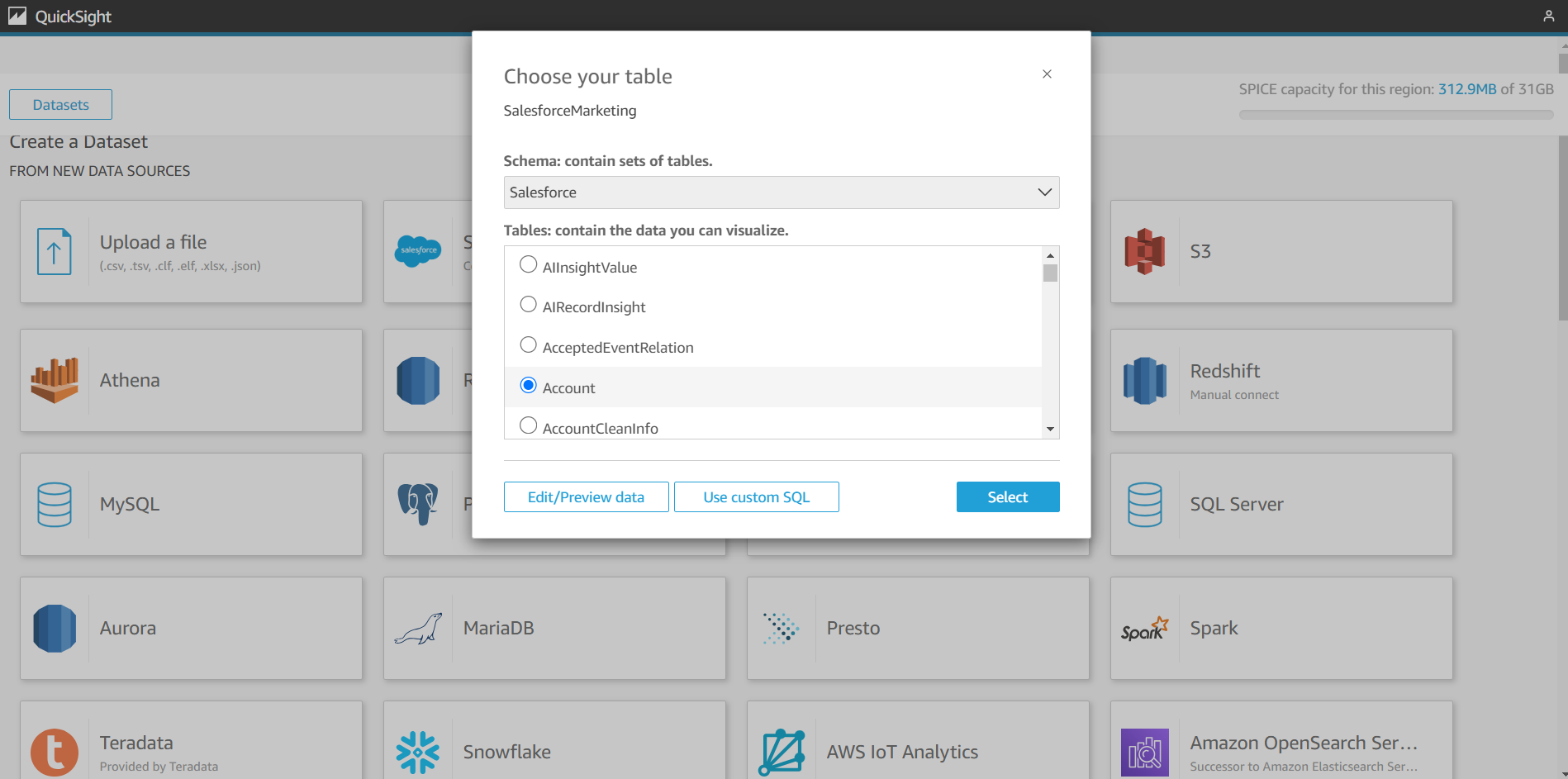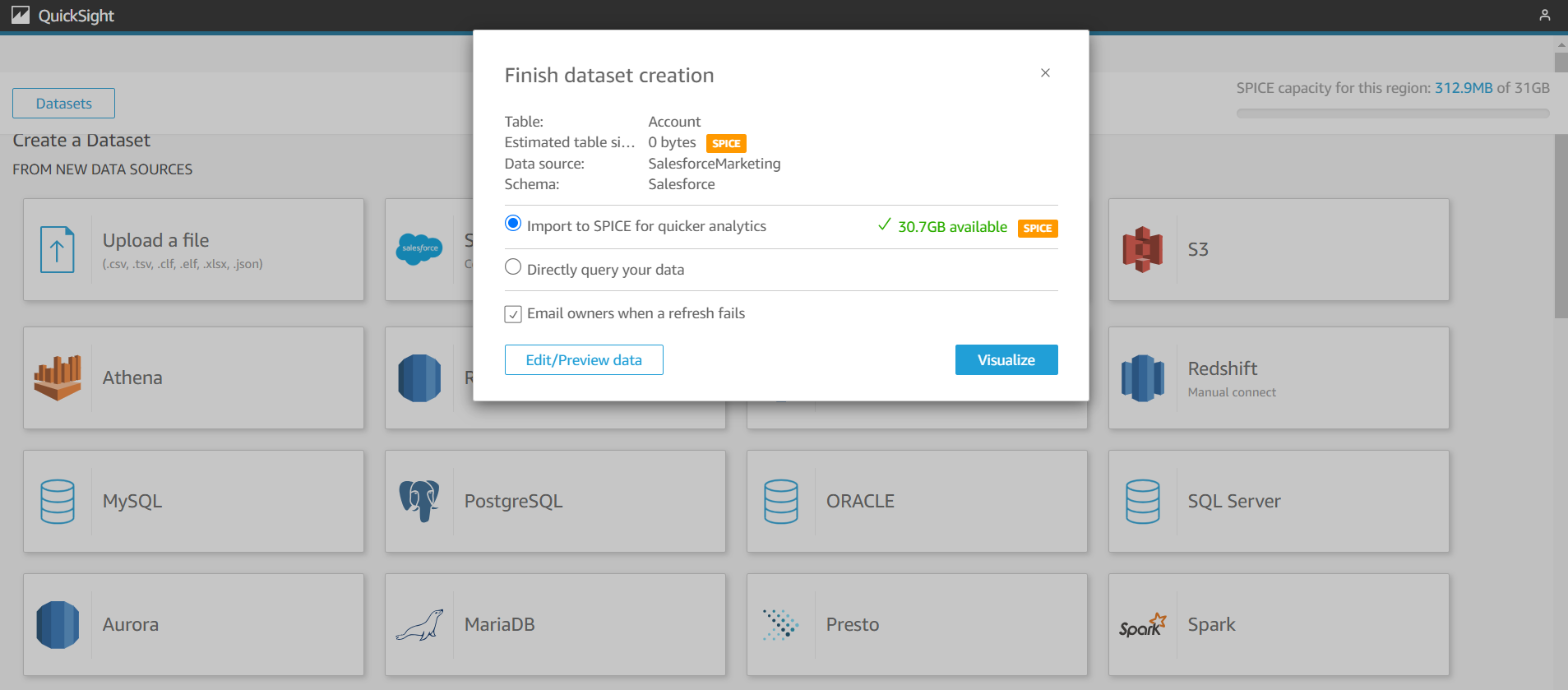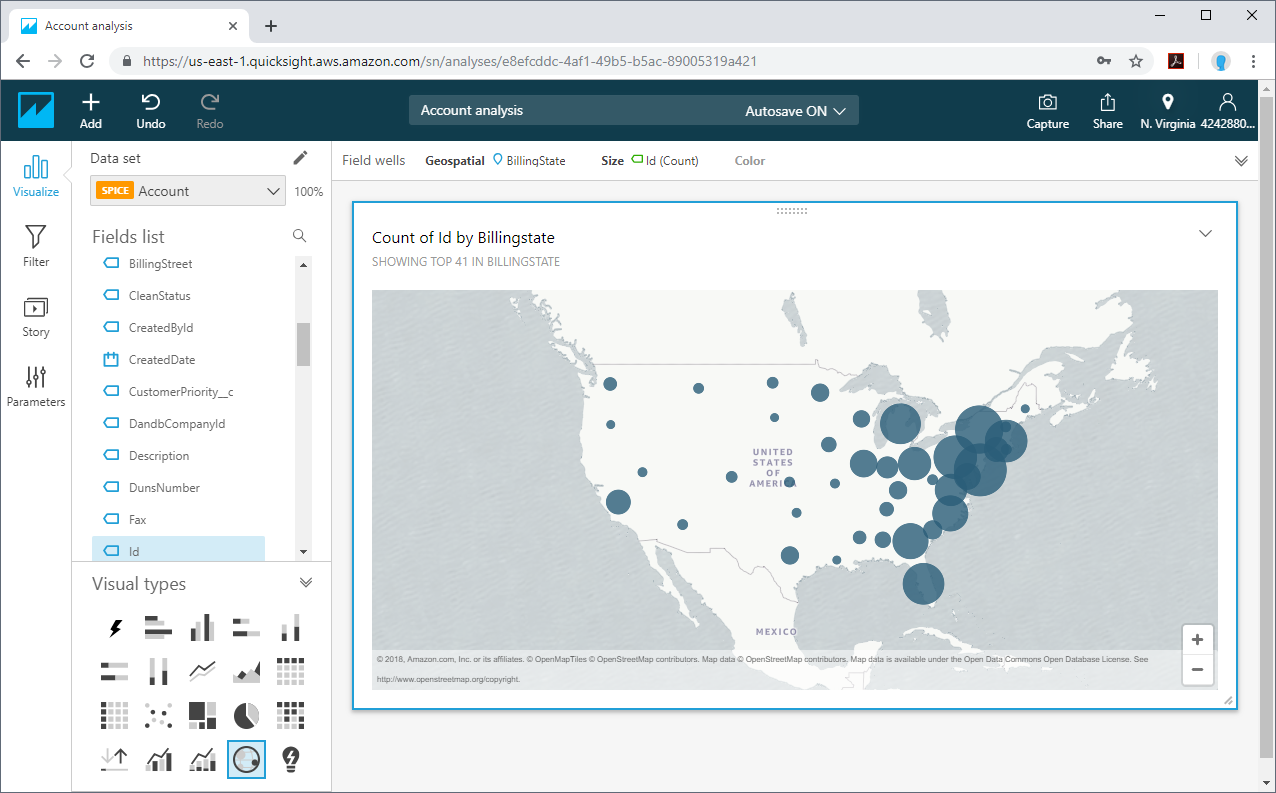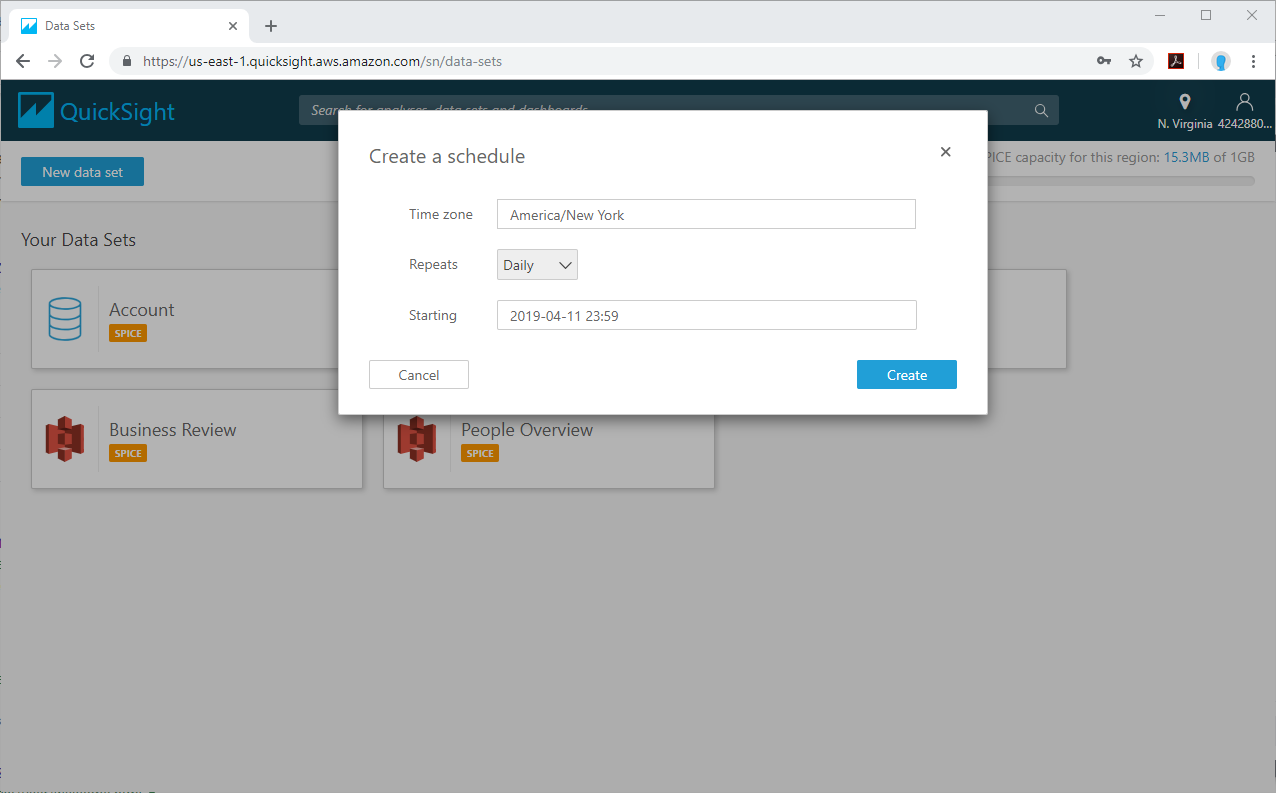Discover how a bimodal integration strategy can address the major data management challenges facing your organization today.
Get the Report →Build Interactive Dashboards from Azure Data Lake Storage Data in Amazon QuickSight
Create a virtual SQL Server database for Azure Data Lake Storage data in CData Connect Server and import Azure Data Lake Storage data into Amazon QuickSight SPICE to build interactive dashboards.
Amazon QuickSight allows users to build interactive dashboards in the cloud. When paired with CData Connect Server, you get direct access to Azure Data Lake Storage data for visualizations, dashboards, and more. This article shows how to create a virtual database for Azure Data Lake Storage in Connect Server and build dashboards in Amazon QuickSight with access to Azure Data Lake Storage data.
CData Connect Server provides a pure SQL Server interface for Azure Data Lake Storage, allowing you to easily build reports from live Azure Data Lake Storage data in Quicksight — without replicating the data to a natively supported database. As you build visualizations, Quicksight generates SQL queries to gather data. Using optimized data processing out of the box, CData Connect Server pushes all supported SQL operations (filters, JOINs, etc) directly to Azure Data Lake Storage, leveraging server-side processing to quickly return the requested Azure Data Lake Storage data.
Create a Virtual SQL Server Database for Azure Data Lake Storage Data
CData Connect Server uses a straightforward, point-and-click interface to connect to data sources and generate APIs.
-
Login to Connect Server and click Connections.
![Adding a connection]()
- Select "Azure Data Lake Storage" from Available Data Sources.
-
Enter the necessary authentication properties to connect to Azure Data Lake Storage.
Authenticating to a Gen 1 DataLakeStore Account
Gen 1 uses OAuth 2.0 in Azure AD for authentication.
For this, an Active Directory web application is required. You can create one as follows:
To authenticate against a Gen 1 DataLakeStore account, the following properties are required:
- Schema: Set this to ADLSGen1.
- Account: Set this to the name of the account.
- OAuthClientId: Set this to the application Id of the app you created.
- OAuthClientSecret: Set this to the key generated for the app you created.
- TenantId: Set this to the tenant Id. See the property for more information on how to acquire this.
- Directory: Set this to the path which will be used to store the replicated file. If not specified, the root directory will be used.
Authenticating to a Gen 2 DataLakeStore Account
To authenticate against a Gen 2 DataLakeStore account, the following properties are required:
- Schema: Set this to ADLSGen2.
- Account: Set this to the name of the account.
- FileSystem: Set this to the file system which will be used for this account.
- AccessKey: Set this to the access key which will be used to authenticate the calls to the API. See the property for more information on how to acquire this.
- Directory: Set this to the path which will be used to store the replicated file. If not specified, the root directory will be used.
![Configuring a connection (SQL Server is shown).]()
- Click Save Changes
- Click Privileges -> Add and add the new user (or an existing user) with the appropriate permissions.
With the virtual database created, you are ready to connect to Azure Data Lake Storage data from Quicksight.
Import Azure Data Lake Storage Data into SPICE and Create Interactive Dashboards
The steps below outline creating a new data set based on the virtual Azure Data Lake Storage database in Connect Server, importing the dataset into SPICE, and building a simple visualization from the data.
- Log into Amazon QuickSight and on the left panel click "Datasets"
- Click "New dataset," select SQL Server as the data source, configure the connection to your Connect Server instance,
and click "Create data source"
![Connecting to Connect Server as a QuickSight data set.]()
- Select a table to visualize (or submit a custom SQL query for your data) and click Select.
![Selecting a Table to visualize.]()
- Select "Import to SPICE for quicker analytics" and click "Visualize."
![Importing data to SPICE for quicker analytics.]()
- Select fields to visualize as well as a visual type.
![Visualizing data in QuickSight via Connect Server (SQL Server is shown).]()
Schedule Refreshes for SPICE Data Sets
QuickSight users can schedule refreshes for data sets that are imported into SPICE, ensuring that data being analyzed is only as old as the most recent refresh.
- Navigate to the QuickSight home page.
- Click "Manage data."
- Select the data set you wish to refresh.
- Click "Schedule refresh."
- Click Create, configure the refresh settings (time zone, repeat frequency, and starting datetime), and click Create.
![Scheduling a refreshing of the data imported into SPICE.]()
SQL Access to Azure Data Lake Storage Data from Applications
At this point, you have a direct connection to Azure Data Lake Storage data from your Amazon QuickSight dashboard. You can create new visualizations, build interactive dashboards, and more. For more information on gaining SQL access to data from more than 250 SaaS, Big Data, and NoSQL sources from applications like Amazon QuickSight, refer to our Connect Server page.








